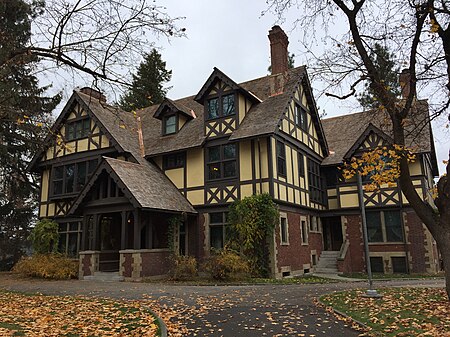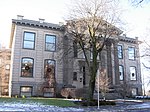Browne's Addition, Spokane

Browne's Addition, often referred to shorthand as just Browne's, is a neighborhood in Spokane, Washington. It is located directly west of Downtown Spokane and is one of the oldest and densest neighborhoods in the city. The area is known for its numerous historic mansions, many of which have been converted into multi-family apartments. The terrain is flat in the neighborhood despite the degree of topographical relief in the immediate surrounding area. Latah Creek cuts a deep valley to the west, separating Browne's Addition from the Sunset Hill portion of the West Hills neighborhood and the Spokane River gorge drops off dramatically to the north into the Peaceful Valley neighborhood. The South Hill area of Spokane rises to the southwest. Browne's Addition is known as one of Spokane's centers of culture, with its collection of historic structures, vibrant culinary and nightlife scene, numerous community festivals, and for being the location of the Northwest Museum of Arts and Culture.
Excerpt from the Wikipedia article Browne's Addition, Spokane (License: CC BY-SA 3.0, Authors, Images).Browne's Addition, Spokane
Spokane
Geographical coordinates (GPS) Address Nearby Places Show on map
Geographical coordinates (GPS)
| Latitude | Longitude |
|---|---|
| N 47.655555555556 ° | E -117.44161111111 ° |
Address
99201 Spokane
Washington, United States
Open on Google Maps











